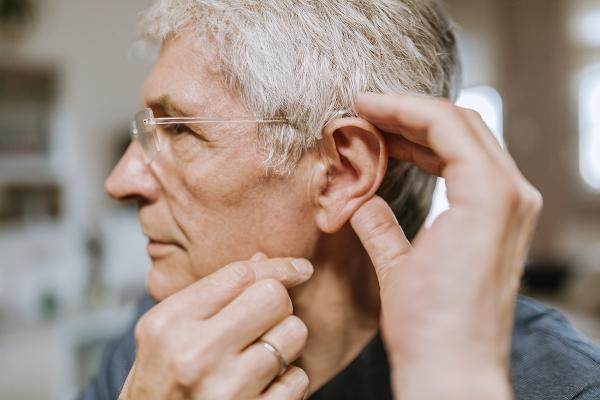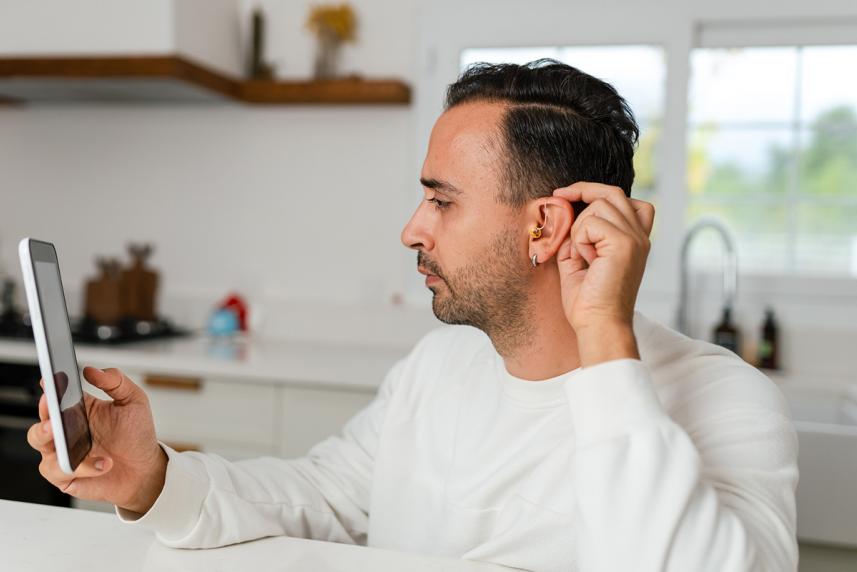
Could you be one of them?
That annoying noise is called feedback — and you don’t need to put up with it. These tips and tricks may help.

When you wear your hearing aids each day, you expect sounds to come through clearly. But what if you sometimes hear a whistling sound through your devices?
This is called hearing aid feedback.1 It may also sound like chirping or squealing. And it’s a common issue for people who wear hearing aids.
“Feedback happens when the hearing aid is not properly inserted or if the unit does not fit properly,” says Katherine Neufeld, Au.D. She’s an audiologist and director of Brighter Hearing based in Savannah, Georgia.
The sound can definitely be distracting and annoying. Worse, it could even discourage you from wearing your hearing aids.
But there are simple steps that might fix the issue right away. Other times, you may need to see your hearing care professional so they can make adjustments.
Give these troubleshooting tips a try.

Could you be one of them?
Make sure that the dome (the soft cap that fits over the speaker) sits snugly in your ear canal. Without a tight seal, the sound from your hearing aid’s speaker can leak out of your ear canal and reenter the device’s microphone. That can cause feedback.2 Try taking out your hearing aids and inserting them again, suggests Neufeld.
Most hearing aids have color coding on the hearing aids (red for right, blue for left). Check that you’ve inserted them on the correct side. If you mix them up, they won’t fit tightly in your ear canal.
When the volume is way up and your hearing aid doesn’t have a tight seal, sound can reenter the hearing aid microphone. Turn the volume down a bit to see if it helps.
You started your morning by inserting your hearing aids tightly. But you might have nudged them out of place during the day. For example, you took off a baseball hat that snagged on the hearing aids. Or maybe you pulled a sweater off over your head. Or you hugged your grandchild.
Impacted earwax can also cause whistling or buzzing, says Neufeld. Why? Sound can bounce off the earwax blockage and lead to feedback. See a hearing care professional if you think ear wax may be the culprit. They can examine your ears and safely remove excess wax.3
Older devices might not fit your ears well anymore, says Neufeld. “Your ear can change over time, especially if you’ve lost weight.” The result? Your hearing aids may not sit tightly in your ear canal. If feedback becomes a regular problem, make an appointment with your hearing care professional. They may need to refit you for new hearing aids.
Another benefit of getting updated hearing aids? With new technology, the built-in feedback management systems are much better than on older models, says Neufeld.
One final thought: Consider talking to your hearing care professional if you’ve had your devices for more than 3 years, recommends Neufeld. It’s key to make sure they still meet your needs.
“If your hearing aids are older than 5 years, I strongly encourage you to consider new devices,” she says. There have been so many advances over the years that could help you hear better.
Through EPIC Hearing Healthcare, you get up to 3 follow-up visits at no extra cost and a trial period to try out your new prescription hearing aids. Learn more.
Sources
Information is for educational purposes only and is not a substitute for the advice of a licensed medical provider. Consult your provider prior to making changes to your lifestyle or health care routine.
Hearing aids purchased in the Silver technology level will receive 1 follow-up visit.